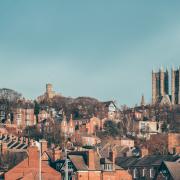John Brooke takes you on a personal tour of Lightcliffe and Hipperholme

Lightcliffe is most pleasantly situated and those who want to live in peace and quiet cannot do better than build a modest mansion here. These are the words of author James Parker, writing in his 1904 Illustrated History from Hipperholme to Tong.
Well, people did come and some of them, especially Bradford mill owners, built modest mansions here.
Lightcliffe was then part of the Hipperholme township and the two continue to be linked today. They retain a great many of their traditional qualities, but have also managed to move with the times. So what gives these West Yorkshire neighbours a true sense of place today? What is the feel of the joint communities? And what does the area mean to the people, like me, lucky enough to live here?
In broad terms, the area does retain many of the pleasing attributes outlined by Parker. For example, a walk from Hipperholme to Bailiff Bridge along Wakefield Road might not be quite as delightful as he suggested but it still provides the observant traveller with many echoes of the past and hope for the future.

On arriving in Hipperholme for the start of such a walk today, visitors immediately notice the parade of independent shops: the fishmonger, bakery, florist, off-licence and the newsagent. These, along with the post office and the library, provide more than a service; they pump life blood into the community’s arteries.
It’s here that people meet and share local and family issues. People know each other because so many of them are involved in the life of the community. People don’t need to travel far either for essential services as the area is served by a doctors’ surgery, a dentist, opticians, pharmacies and many hairdressers.
Hipperholme is also home to the Old Brodleians Rugby Union Club, formed originally by old boys of the now co-educational and independent grammar school, the bowling club and Christ Church (a happy amalgamation of the Methodist and United Reformed churches). Here, in a joint enterprise with two Anglican churches, the Friday community lunch club meets.
Wandering down Wakefield Road, after passing the Stray, we find Lightcliffe Tearooms where locals meet over coffee and cakes, the ‘handsome national schools’ (now Lightcliffe CE Primary School), St Matthew’s Church, Lightcliffe Cricket Club and the tower of the former 1775 Georgian church.

The closed part of the churchyard, until recently overgrown and neglected, is now being cared for by the Friends of Lightcliffe Churchyard, along with farmer Chris Green who tends the open section. Their work has recently been supported by a Heritage Lottery Fund grant.
It’s in the eastern end of Lightcliffe that we also find Lightcliffe Academy and Cliffe Hill Primary School. The latter opened in 1952 to serve the Stoney Lane estate and is now housed in exciting new premises.
All of this, and more, provides a sense of belonging in both Hipperholme and Lightcliffe. There is a strong continuity in their presence illustrated in, for example, the CE primary school, the Old Brodleians and the cricket club. Generations of local families have passed through their record books, many current pupils at the school are being educated where their great-great-great grandparents first learned to read and write and, at the cricket and rugby clubs, sons have followed fathers year on year.
What then is the feel of the place? All the societies, institutions, businesses and individuals play their part in creating a rich sense of community. The local history society provides a chance for reflection with its annual programme of local speakers while the schools provide a bright hope for tomorrow.
American writer, essayist and activist Rebecca Solnit said: ‘Places matter, they map our lives.’ Hipperholme and Lightcliffe certainly matter, especially to those of us who live here.



























